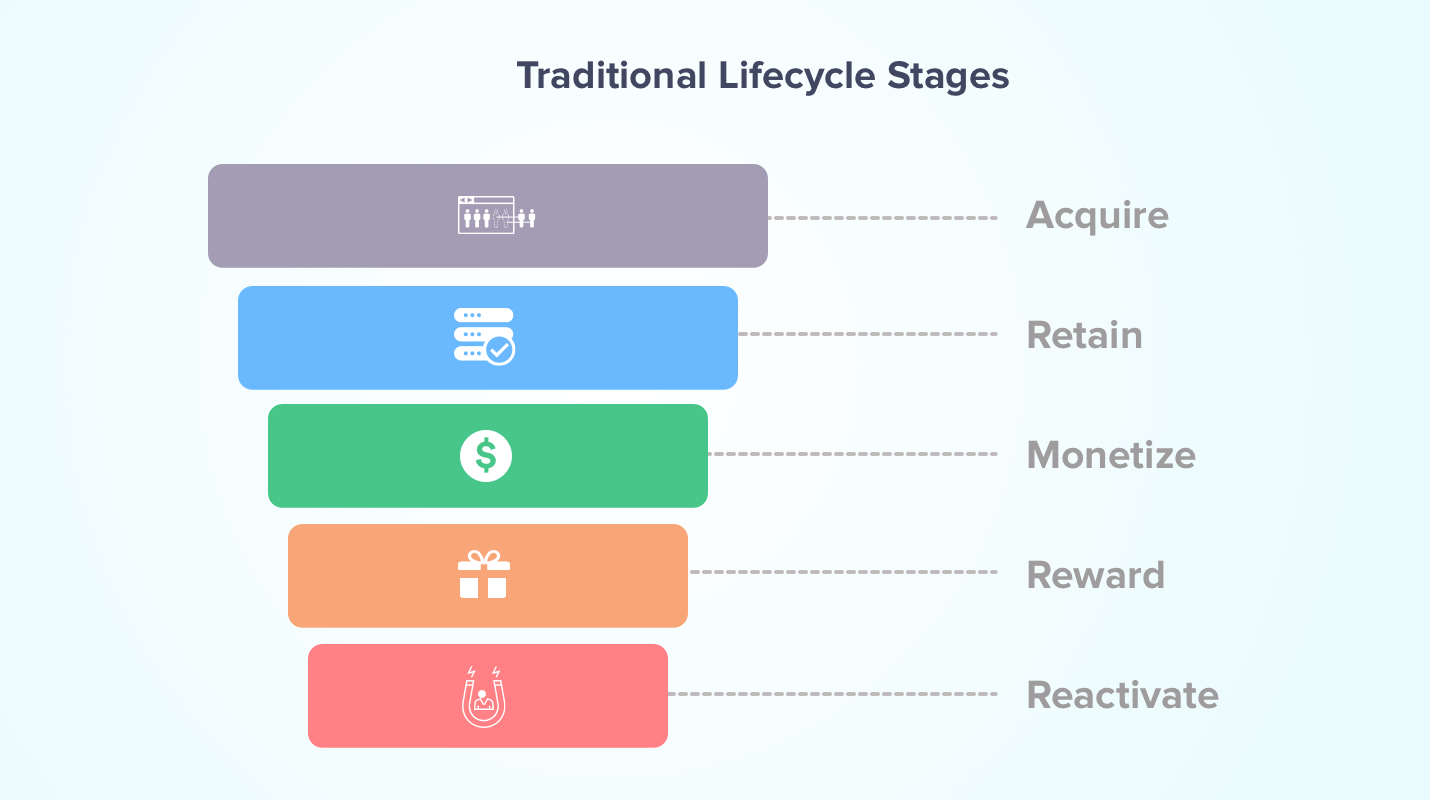The essence of lifecycle marketing is to communicate with your users at every customer lifecycle stage with relevant offers or support, and encourage them to actively use your app.
Lifecycle marketing is the process and strategies used to market to customers with messages and offers that are relevant to where they are on the customer journey.
This journey can be defined by the 5 customer lifecycle stages:

The idea here is that a customer’s needs will vary depending on what stage they are at. A prospect who is in the Acquire stage will necessarily need to be made aware that your brand exists. Reach out to them via top-of-funnel blog posts or social media updates and advertising.
Meanwhile, someone in the Monetize stage can be sent materials that help them come to a buying decision, such as white papers or industry-specific reports.
Read our blog post for more stage-specific tactics.
The main goals of lifecycle marketing are really simple – attract and retain your customers.
But in the process you’ll also want to:
Today’s hyper-connected users present several challenges.
Firstly, traditional customer lifecycle stages are not immediately actionable. For example, it’s great to know you need to “retain” users, but which retention strategy will work for a specific user?
Secondly, many of the older lifecycle marketing models follow a sequential and inflexible pattern. The problem is that today’s customers take very little time between stages. They can go from Acquire to Monetize in minutes. And if your marketing is two steps behind them, they’re going to have a poor customer experience that will immediately fling them into the Reactivate stage.